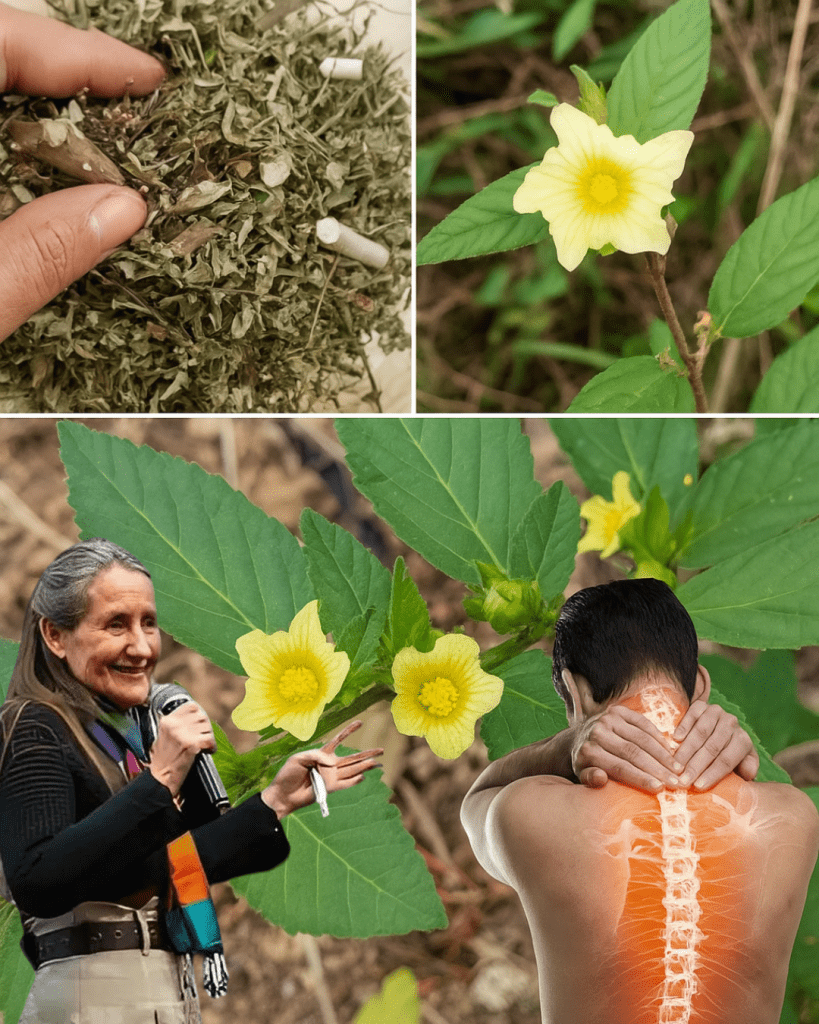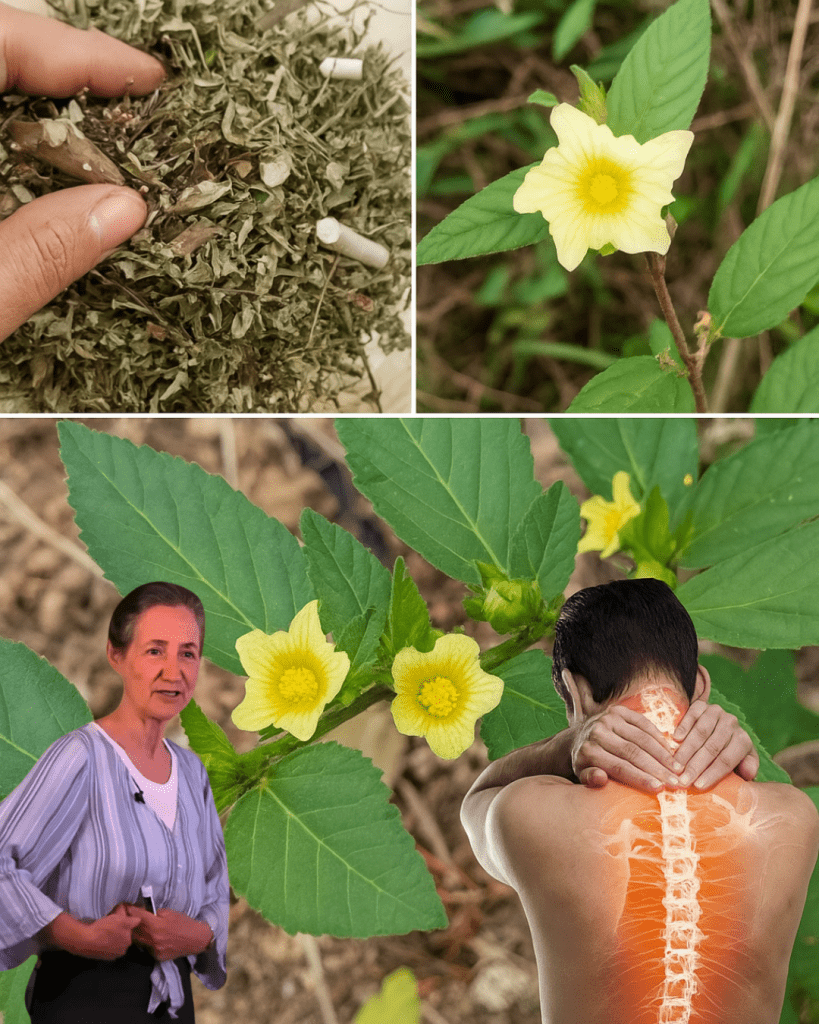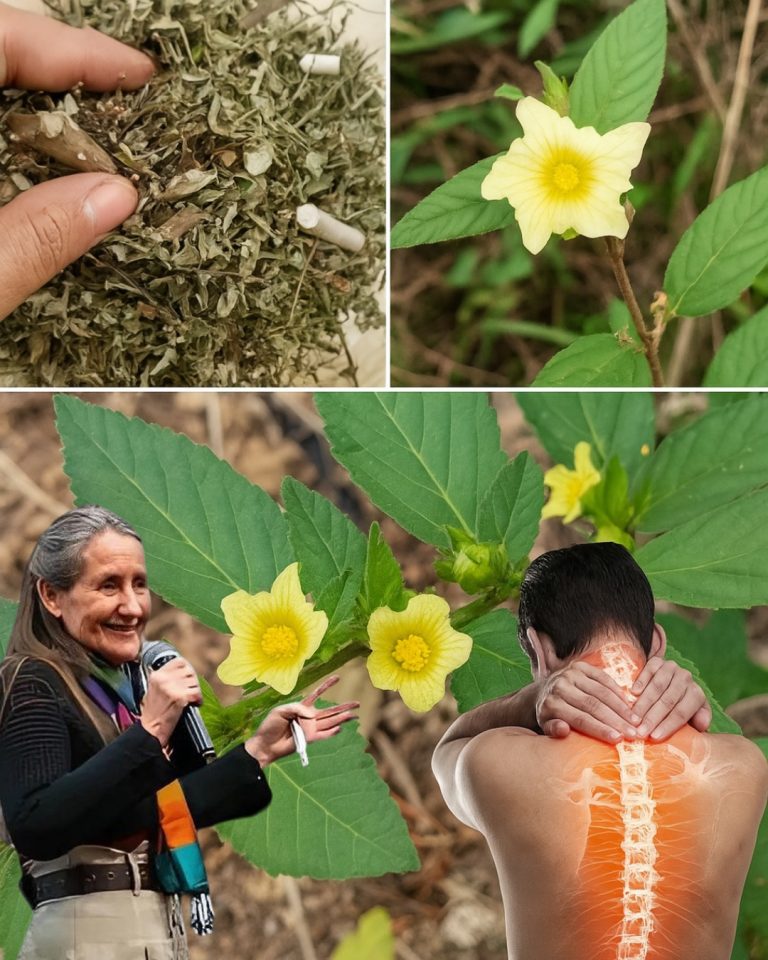Have you ever stumbled upon a plant that seems like just another weed but holds a treasure trove of health benefits? Sida acuta, often dismissed as a common roadside shrub, is a powerhouse in traditional medicine, offering remedies for everything from fever to skin issues. If you’re curious about natural ways to boost your health or seeking alternatives to synthetic treatments, this unassuming plant might just be your new best friend. Dive into this guide to uncover the remarkable benefits, uses, and a simple recipe to harness Sida acuta’s potential—all while staying grounded in its safe, traditional applications.

What Is Sida Acuta? Unveiling the Plant’s Identity
Sida acuta, a member of the Malvaceae family, is a perennial shrub native to Central America but now thriving in tropical and subtropical regions worldwide. Known by names like “broom weed” or “Isekotu” in Yoruba, it grows along roadsides, farmlands, and waste areas, often reaching 1-1.5 meters tall. Its narrow, toothed leaves and small yellow flowers make it easy to spot, but it’s the plant’s medicinal properties that steal the show. For centuries, indigenous communities have used its leaves, roots, and stems to address a wide range of ailments, from headaches to infections.
Why does this plant matter to you? Its accessibility and versatility make it a go-to in herbal medicine, especially in regions where modern healthcare is scarce. But don’t let its “weed” status fool you—Sida acuta is packed with bioactive compounds like alkaloids, flavonoids, and phenolics that drive its therapeutic effects. Let’s explore how this plant can transform your approach to wellness.
The Science-Backed Benefits of Sida Acuta
Sida acuta’s reputation in traditional medicine is no folklore—it’s backed by science. Studies have identified over 140 chemical constituents in the Sida genus, with Sida acuta shining for its antioxidant, antibacterial, anti-inflammatory, and antimalarial properties. Here’s a closer look at its key benefits:
1. Fights Infections with Antibacterial Power
Sida acuta’s leaves and stems are rich in alkaloids like cryptolepine, which show strong activity against bacteria such as Salmonella and E. coli. Herbal ointments made from its extracts have outperformed standard medications in some studies, making it a promising ally for wound healing and skin infections.
2. Soothes Inflammation and Pain
Struggling with aches or inflammation? The plant’s anti-inflammatory compounds, including flavonoids, help reduce swelling and pain. Traditional uses include applying leaf poultices to relieve joint pain or treating conditions like rheumatism.
3. Supports Blood Sugar Control
Research on diabetic animal models suggests that Sida acuta extracts can lower blood glucose levels and improve glucose tolerance. This makes it a potential natural aid for managing diabetes, though always consult a healthcare provider before use.
4. Protects Liver and Kidneys
Sida acuta’s antioxidant properties help combat oxidative stress, shielding vital organs like the liver and kidneys from damage. Studies show its leaf extracts can attenuate hepatotoxicity caused by toxins, offering a natural protective boost.
5. Calms the Mind and Body
Feeling anxious or restless? Sida acuta has demonstrated sedative and anxiolytic effects in animal studies, reducing stress and promoting relaxation. It’s traditionally used to treat nervous disorders, making it a gentle, natural option for calming the mind.
6. Promotes Wound Healing
When applied topically, Sida acuta’s methanol extracts accelerate wound closure in animal models, thanks to its antibacterial and antioxidant properties. This makes it a go-to for treating cuts, ulcers, and skin irritations.
Traditional Uses Across Cultures
Sida acuta’s versatility shines in its global applications. In Ayurveda and Siddha medicine, it’s used to balance vata dosha, treat respiratory issues, and purify blood. In Central America, indigenous tribes like the Embera and Wounaan use it as a snakebite remedy and antipyretic. In Nigeria, the plant’s juice is applied to soften abscesses, while its roots are chewed for toothache relief. From treating malaria in Africa to diarrhea in South America, Sida acuta’s reach is truly global.
How to Use Sida Acuta: A Simple Herbal Tea Recipe
Ready to try Sida acuta for yourself? Here’s a straightforward recipe for a Sida acuta herbal tea, traditionally used to relieve fever, headaches, or digestive issues. Always source your herbs from reputable suppliers and consult a healthcare professional before use, especially if you’re pregnant, nursing, or on medication.
Ingredients
- 1 tablespoon dried Sida acuta leaves (or 2 tablespoons fresh leaves)
- 2 cups water
- Optional: 1 teaspoon honey or lemon for flavor
Instructions
- Prepare the Leaves: If using fresh leaves, wash them thoroughly to remove dirt. If using dried leaves, ensure they’re from a trusted source.
- Boil Water: Bring 2 cups of water to a boil in a small pot.
- Add Leaves: Reduce heat to low, add the Sida acuta leaves, and let them simmer for 10-15 minutes to extract the bioactive compounds.
- Strain: Pour the tea through a fine mesh strainer into a cup, discarding the leaves.
- Flavor (Optional): Add honey or lemon to enhance taste, if desired.
- Serve: Drink warm, 1-2 times daily, in small doses (0.6-1.8 grams of dried extract equivalent, as suggested by some sources).
Note: Start with a small amount to test your body’s response. Avoid overuse, as high doses may cause side effects like drowsiness due to the plant’s sedative properties.

Precautions and Safety Tips ✅
While Sida acuta is a natural remedy, it’s not without risks. Here are key precautions to keep in mind:
- Avoid Confusion with Sida Cordifolia: Unlike Sida cordifolia, which contains ephedrine and is banned in some countries due to heart-related risks, Sida acuta is generally safer but still requires caution.
- Consult a Doctor: If you have conditions like diabetes, liver issues, or kidney problems, seek medical advice before using Sida acuta, as it may interact with medications or affect blood sugar.
- Moderate Dosing: High doses (e.g., 500-1000 mg/kg in studies) may cause sedation or affect motor coordination. Stick to recommended amounts.
- Pregnancy and Nursing: Limited data exists on safety during pregnancy or breastfeeding, so avoid use unless guided by a professional.
Why Sida Acuta Deserves Your Attention
Sida acuta isn’t just another plant—it’s a natural pharmacy with a rich history and growing scientific support. Its ability to fight infections, reduce inflammation, and support organ health makes it a versatile addition to your wellness toolkit. Whether you’re exploring herbal remedies for the first time or seeking sustainable alternatives, this plant offers a wealth of possibilities.
By incorporating Sida acuta into your routine through a simple tea or topical poultice, you can tap into centuries-old wisdom backed by modern research. Just remember to use it mindfully, respecting its potency and your body’s unique needs. Have you encountered Sida acuta in your area or tried it before? Its unassuming presence might just be nature’s way of hiding a powerful ally right in plain sight.
